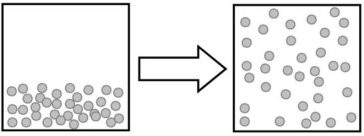Discuss the adaptations used by marine organisms to prevent sinking
What will be an ideal response?
Some animals increase their buoyancy to remain in near-surface waters. They may have internal structures containing gas, which significantly reduce their average density. Air is almost 800 times less dense than water at sea level, so even a small amount of air inside an organism can dramatically increase its buoyancy. Generally, animals use either an internal, rigid gas container or a swim bladder to achieve neutral buoyancy, using the amount of air in their bodies to regulate their density, so they can remain at a particular depth without expending energy to do so. Floating animals range in size from microscopic shrimplike organisms to relatively large species, such as the familiar jellies. These floating organisms—collectively called zooplankton—comprise the second largest biomass in the ocean after phytoplankton and other photosynthesizing microbes. Microscopic forms of zooplankton usually have a hard shell called a test. Most types of microscopic zooplankton have adaptations to increase the surface area of their bodies (or shells) so they can remain in the sunlit surface waters near their food source. In addition, some organisms produce low-density fats or oils to stay afloat. Many zooplankton, for example, produce tiny droplets of oil to help maintain neutral or nearly neutral buoyancy. As another example, sharks have a very large, oil-rich liver to help reduce their density and float more easily. Many larger forms, such as jellies, have soft, gelatinous bodies with little if any hard tissue, which reduces their density and allows them to stay afloat. Larger animals often have the ability to swim, but if their bodies are denser than seawater, they must exert more energy to propel themselves through the water.
You might also like to view...
The following image describes which type of change?
A. a physical change B. a change in reactivity C. a chemical change D. an elemental change E. no change
The "peace" thesis on the origin of the Indo-European language family postulates that the first Indo-European speakers may have been the Kurgan people, who lived near the border of present-day Russia and Kazakhstan
Indicate whether the statement is true or false.
Bent tree trunks on a slope are indicative of
A) a fall. B) a slump. C) an avalanche. D) creep.
At its maximum extent, continental glacial ice in North America extended as far south as ________
A) the Gulf of Mexico B) Florida C) Minnesota D) The Ohio River E) Montana